|
CHAPTER IX
EGYPT
IT is not my intention to write a history of Egypt.
Many histories
of
Egypt have already been written, enough to fill a library by
themselves. My sole object in this work is: First, to show by
records, not theories, who the original Egyptians were. Second, to
show that the original settlers in Egypt were the children of Mu and
came directly from Mu, the Motherland, to Egypt.
This will unravel
the apparent mystery encountered by ethnologists as to the origin of
the Egyptians and show the reason why, from the beginning of the
Egyptian history, the Egyptians have been found to have been a
highly civilized, cultured people.
Many Egyptologists find enigmas concerning the two Egyptian
religious cults. These apparent enigmas are brushed aside when it is
known in what way Egypt was first peopled and by whom. Egyptologists
have gone far astray in their many theories and deductions on many
points simply because they have not understood the symbology of the
ancients and their symbolical writings, nor could they comprehend
the esoteric meanings of these writings.
For this they cannot be
blamed, for no key has been found and no school existed where they
could be learned. These secrets, for many hundreds of years at
least, have been known only to a very few old, Oriental sages. And
these old sages spend their lives in their temples and monasteries,
seldom coming in contact with the outer world.
When they have done
so, the information given by them is so unorthodox to present
theories that the recipients have looked upon it as a pack of
nonsense.
Egypt was colonized by two sets of people, commencing at two
separate and distinct parts. One set coming to Lower Egypt from the
West, the other set coming to Upper Egypt from the East. The
colonists coming from the West made their first settlement at Sais
on the Nile Delta and were anciently known as the Nile Colony. The
colonists coming from the East made settlements on the East Coast of
Africa from Cape Guardefui to the head of the Red Sea.
In India I
find the name Maioo given as the name of this colony, but whether it
included all of the territory heretofore mentioned, or only a part
near Suakin on the Red Sea, I cannot say. Maioo was their Capital
City, at least at the time of the writing of the Indian records, and
it would seem to have been the name of the district as well. From
the coast they worked back until they came to the Nile.
Here they
extended themselves both up and down. Eventually, the Upper
Egyptians met the Lower Egyptians on the Nile, thus forming another
complete chain of man around the earth.
About ten thousand years after the first settlement was made at
Sais, war broke out between the people of Upper Egypt and the people
of Lower Egypt, resulting in the overthrow of the Lower Egyptians.
The two were then joined and thereafter formed one empire.
I will
now go back and trace the Upper Egyptians to their colony from
India.
THE MAIOO COLONY
After the Babylonian Colony was formed, how long
afterwards is not known,
the Nagas from India took another step to
the West.
From India they went to northeast Africa. They made
settlements in the Gulf of Aden and at different points on the West
Coast of the Red Sea. Both Indian and Egyptian records speak of
their settlement at Maioo in Nubia, Upper Egypt. Maioo was on the
Red Sea near where the modern town of Suakin is situated. This
colonization took place somewhere in the neighborhood of 15,000
years ago.
At that time the country was fiat, for up to this time
the African mountains had not been raised. It is also doubtful if
any of the present desert lands then existed in this part of the
earth.
Later the settlers are found to have worked their way inland as far
as the headwaters of the Nile, namely, to the White and Blue Niles.
This Naga settlement grew, flourished, and became very powerful.
Eventually, they made war on the Mayas, the Lower Egyptians,
conquered them and turned the two Egypts into one Empire.
Mena or
Menes was the first dynastic king to reign over both Upper and Lower
Egypt and with his appearance on the historical stage of Egypt, the
title of "King of the North and South" was adopted.
The origin of the Upper Egyptians is easily traced by their
principal symbol of the Deify, the Sun, which is verified by written
records in both Indian and Egypt. The well-known Egyptian winged
solar disk, with its pair of serpents, was introduced" into Lower
Egypt by the Upper Egyptians.
The Egyptian winged circle is the only one among the many designs of
this symbol found in all ancient countries, that has a serpent in
the design. This is not accidental, nor was it added for the sake of
artistry. It was their expression of reverence for the Creator, and
to retain the memory that in their olden times and mother country,
they used principally the symbol Naga, the Serpent, to symbolize the
Deity as the Creator.
In this design the Sun is made the principal
symbol, being placed as the central figure in the design. While the
Sun became their most sacred symbol of the Deity, the Serpent as the
Creator came next. Beyond these two, no other of the many symbols of
the Deity are used without their being shown as secondary,
symbolizing attributes. Even the crown of the king was adorned with
the serpent as the symbol of the Creator.
The Sun was not used in
the crown because the Sun was the Infinite, the Almighty; thus to
have used the Sun would have been sacrilege.
Thus we see the reflection of India in Egypt.
These people came from
India and retained that which reminded them of India.
Philostratus, in "Life of Tyana," page 146, says: "The first
Egyptians were a colony from India."
Valmiki, the Hindu sage-historian, whose works were written from the
records of the Rishi Temple at Ayhodia, says: "The Mayas from India
established a colony in Egypt, giving it the name of Maioo."
Records state that Narana, the High Priest of the Temple, read the
records to Valmiki and Valmiki wrote them from his dictation.
Valmiki in "Ramayana," Vol. I, page 342, Fauche's translation reads:
"The Naacals first established themselves in the Deccan, India, and
from there carried their religion and learning to the colonies of
Babylonia and Egypt"
Brunsen, in "Egypt's Place in World's History," Vol. 4, page 58,
says: "The latest date at which commencement of Egyptian life, the
migration from the Euphrates district, can have taken place was 9850
B.C."
I cannot imagine Brunsen saying that a migration from the Euphrates
Valley to Egypt took place unless he had found some sort of a record
to warrant it.
This leaves an open question. Did his record refer to
Oman and did he include this as a part of the Euphrates district, or
did some of the Akkadians actually join the companies going to Egypt
from Oman or Akkad?
Personally, I have never come across any records
stating that the Akkadians took any part in the colonization of
Egypt from India, but I have not seen all the records there are by a
very long way.
Yet another possibility remains: When the Mayas first commenced to
go to Egypt from India, Akkad may have been their supply station en
route. Brunsen may have come across some old record saying that the
colonists had left Akkad for Egypt, thereby inferring that the
colonists were Akkadians, not Hindus. Valmiki's record stating that
the Mayas from India formed a colony in Egypt, is not the only Hindu
record stating the fact.
There are many, but Valmiki's being a
temple record, I have looked upon it as being all that is necessary
from India with the corroboration of Brunsen and Philostratus. The
Hindu temple records distinctly state that the Egyptian Colony was
formed from India and not from the Euphrates Valley. Philostratus
corroborates it.
Now I will go to Egypt and take up the other end of the line. There
is no Maioo on the Egyptian map today, so we must hunt up some old
Egyptian records; first, to find out if ever there was a Maioo in
Egypt, and secondly, to find out its exact location.
Brugsch Bey, considered one of the most reliable authorities on
ancient Egypt, in his "History of Egypt under the Pharaohs," Vol. 2,
pages 78 and 174, says:
"The name Maioo is comprised in the list of
lands conquered by Thotmes III... The name Maioo is found in a
list of lands in a sepulchral chamber in Nubia."
This is a perfect confirmation by Egyptian history of Valmiki's
record. Nubia lies in Upper Egypt on the west coast of the Red Sea.
Nubia commences a little north of the Straits of Bab-el-Mandeb.
Suakin is one of the present-day seaports of Nubia.
Some Egyptologists have tried to get away with the raw proposition
that the original Egyptians came from the Euphrates Valley, crossed
the Assyrian Desert, entered Lower Egypt, and from there worked up
to the White and Blue Niles, then split up and formed two empires.
They have not a record or legend to warrant them in putting forward
such an absurd statement.
Such a contention as crossing a waterless
desert, thus selecting the most physically impossible route when a
very easy, safe, natural water route lay before them, is the top
notch of absurdity.
Did not Berosus say that the people first met by
the Semitics on the Euphrates were "half fish and half human," and
does not Valmiki tell us that,
"the Mayas were mighty navigators
whose ships went from the eastern to the western oceans and from the
northern to the southern seas"?
Yet these were the men who preferred
to travel over a waterless desert twice the distance they would have
had to go by water.
By the water route they would have saved
hundreds of miles of travel, they would have been in sight of land
all the way, and could reach their destination without a single
obstruction. If any reader will take a map and plot out the two
routes, the result will be more convincing than any pen could write.
Again, no sane being could imagine colonists leaving the fertile
lands of the Nile Delta when they got there, to pound their way
through trackless deserts to where they knew not.
The foregoing is the story of Upper Egypt. I shall now proceed to
show byvarious records who the Lower Egyptians were and where they
came from.
The history of Lower Egypt is so interwoven with the
history of Atlantis that nearly all known records refer to both, so
I am forced to use over again many of the records I used for
Atlantis. It is reiteration, I know, but I think the subject
justifies it and hope my readers will look at it in the same light.
One loses the continuity of a subject when he has constantly to be
turning back to previous pages.
THE NILE COLONY
The Nile Colony was the original name of Lower
Egypt.
It was started at Sais on the Nile Delta by Mayas, coming
from Atlantis under the leadership of Thoth about 16,000 years ago.
The Nile Delta appears to have been neglected by the early
Mediterranean settlers, as geological phenomena show that Asia
Minor, the Balkan Peninsula and islands, and the Caucasian Plains
were occupied many thousands of years before 14,000 B. C.
At that
time the lower end of the Balkan Peninsula, Asia Minor and the
Caucasian Plains were ideal lands for settlers, rich soil and well
watered, with an ideal climate. The Nile Delta to them then,
apparently, appeared to be only a hot, sandy country. Therefore, it
may be rightfully assumed that it could only have been a scarcity of
land for the ever increasing number of settlers or some untoward
event that took the first settlers there.
Records will tell, we need
not theorize.
Schliemann: A tablet found in Maycarne, Crete, by Schliemann says:
"The Egyptians descended from Misar. Misar was the child of Thoth,
the god of history. Thoth was the emigrated son of a priest of
Atlantis. He built the first temple at Sais and there taught the
wisdom of his native land."
Troano Manuscript: "Fleeing from the wrath of her brother Aac, Queen
Moo directed her course towards the rising sun and at last reached
the Maya settlement which had recently been established on the banks
of the Nile. There she met Thoth, the founder, who became her friend
and preceptor in religious matters."
Egyptian Papyrus, time of Pharaoh Sent, 2nd Dynasty: "Pharaoh Sent
sent out an expedition to the west in search of traces of Atlantis
from whence 3350 years before the Egyptians arrived carrying with
themselves all the wisdom of their native land."
Rawlinson: "Origin of Nations," page 13 : "The Egyptians themselves
claimed that their ancestors were strangers who in very remote times
settled on the banks of the Nile."
Herodotus: "The Egyptians boasted that their ancestors in the lands
of the West, were the oldest men on earth."
Diodorus: "History," Vol. 1, page 50: "The Egyptians themselves
claimed that their ancestors were strangers who in very remote times
settled on the bank of the Nile, bringing with themselves the
civilization of their mother country, the art of writing and a
polished language. They had come from the direction of the Setting
Sun and that they were the most ancient of men."
Teiss: "A Miracle of Stone," page 40: "The Egyptians came from
Kuiland, the country of the gods in the west."
Plutarch: "Life of Solon": "When Solon visited Egypt Souchis, a
priest of Sais, and Psenophis, a priest of Heliopolis, told him that
9000 years since, the relations of the Egyptians with the Lands of
the West had been interrupted because of the mud that had made the
sea impassable after the destruction of Atlantis by earthquakes and
the country beyond by floods."
Orpheus: "Egypt, the daughter of Poseidon" (Atlantis) .
Lepstus: Lepsius found the same sacred symbols among the ceremonials
of the Egyptians as he found in the ceremonies of the American
Mayas.
The foregoing is evidence that:
-
the first Egyptians were Mayas
-
the first settlers in Lower Egypt
came from Atlantis
-
the first settlers in Upper Egypt came from
India; subsequently both colonies were augmented by colonists from
the Motherland via India and Mayax
-
that the inhabitants of Mu were
the first men on earth; that Atlantis was destroyed by earthquakes
and submerged
-
that America was destroyed and made impassable and
uninhabitable for a long time by cataclysms
-
that in Egypt Mu, the
Motherland, was also called the Lands of the West and Kui Land
-
that Mu, sometimes called the Lands of the West and Kui Land, did once
exist and was the original habitat of Man
-
that Egypt was once a
colony of Mu and after Mu went down, became an Empire
Osborn:
"In Egypt it is notorious that there is no indication of an
early savagery. All authorities agree that however far we go back we
find in Egypt no rude, uncivilized time out of which civilization is
developed.
The reasonable inference from these facts appears to be
that the first settlers in Egypt were a company of persons in a high
state of civilization, but through some strange anomaly in the
history of man they had been deprived of a great part of their
language, and the entire written system which had formerly been the
means and vehicle of their civilization."
I am afraid that when Osborn penned the foregoing, he was depending
more on imagination than research such as his subject deserves.
Had
he read the works of the Greek philosopher, Diodorus, he would have
found before he turned the fiftieth page that his "reasonable
inferences" were without foundation, for the Egyptians brought a
written language and maintained it throughout Egyptian history. The
sixty-fourth chapter of the Book of the Dead was written by Thoth at
the commencement of Egyptian history. The hieratic alphabet of the
Egyptians is
given on page 34. Down to a few hundred years B.C. many
of these letters will be found retained in all of their subsequent
symbolic alphabets.
They permeate the writings of
the Book of the
Dead.
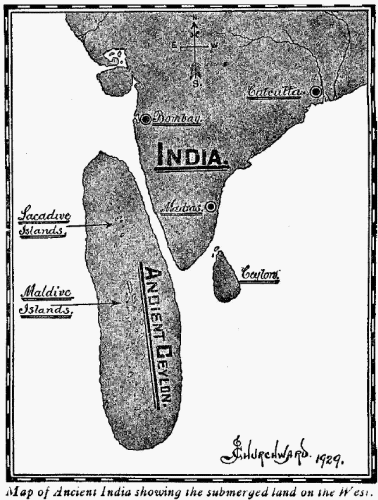
Osiris
Egyptologists differ widely concerning who and what Osiris
was.
Many claim he was a myth; others that he was simply a symbol;
while others declare he was a living man. Some Egyptologists assert
that he was a king somewhere. The Egyptians themselves affirm that
he once lived and claim various places in Egypt as his birthplace
thus showing that not one of them knows anything beyond the fact
that he was at the head of the Triune of Lower Egypt.
Osiris was a man and his history has been recorded by the Naacals.
Their writings say:
"Osiris was born in Atlantis (about) 22,000
years ago. On arriving at young manhood, he left Atlantis and went
to the Motherland to study in her colleges. He entered a Naacal
college where he studied and remained until he became a Master and a
Holy Brother. He then returned to Atlantis and there purged religion
of the extravagances and excesses which had crept into it.
He then
became the head of the Atlantian Church, a position which he held
through a long life. The people so loved him for his gentleness and
gentle teachings that they wanted to dethrone the King and place
Osiris on the throne. This he would not permit and positively
refused to allow such a thing to be talked about."
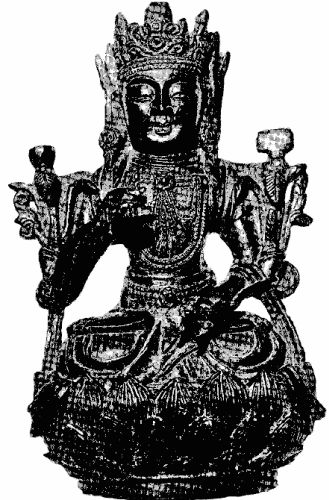
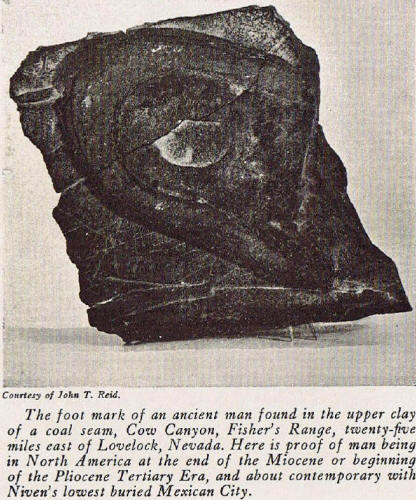
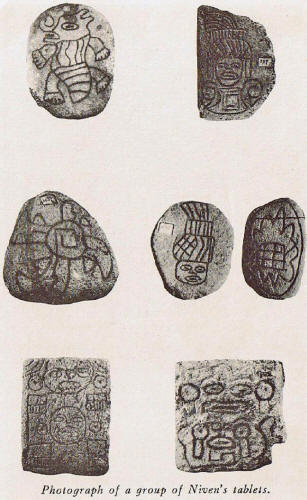
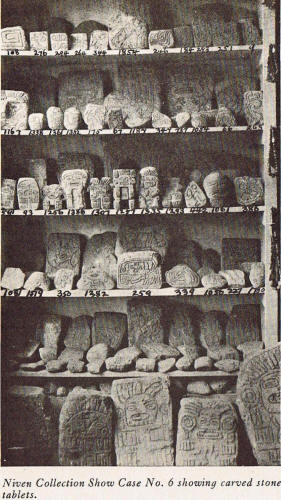
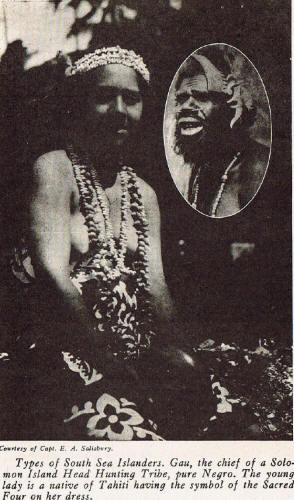
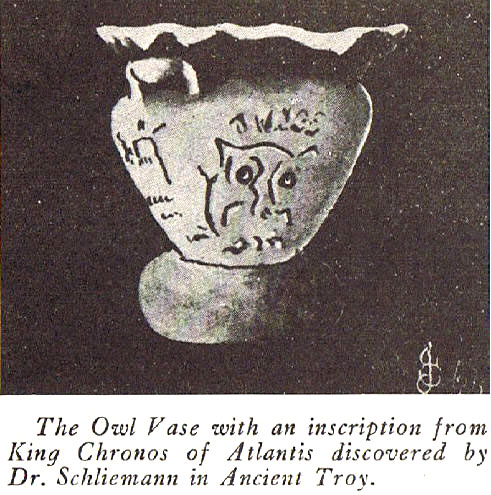
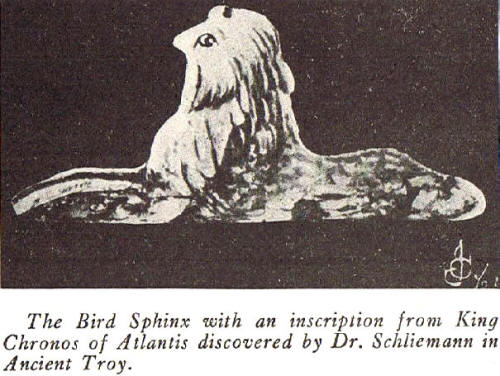
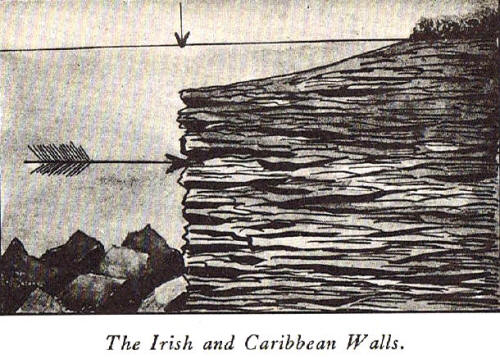
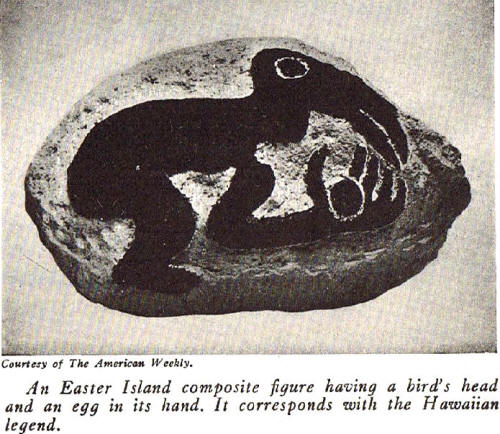
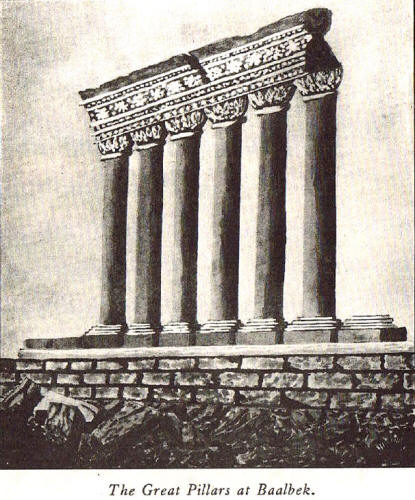
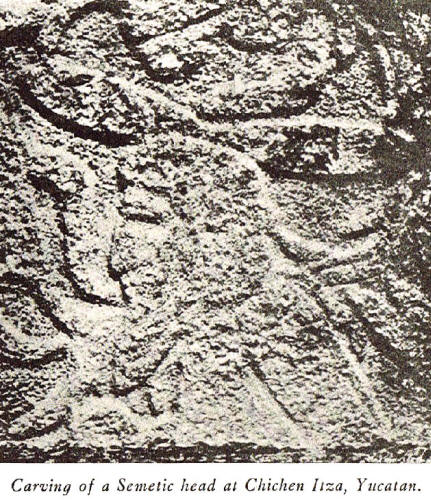
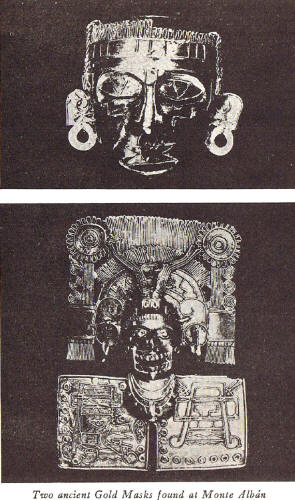
When Osiris died he was deified and religion called after him, just
as our religion today is called the Christian religion after the
teachings of Christ.
There is no mention in the Naacal writings as
to the cause of the death of Osiris. The Egyptians have their own
tale. According to them, the end of Osiris was a tragedy.
Osiris,
according to the Egyptians, was murdered by a brother called Set.
Set became fanatically jealous of his brother Osiris on account of
the great love of the people for Osiris, which ended in Set
murdering him. About ten thousand years after the time of Thoth, the
vile, unscrupulous Egyptian priesthood, to bring fear and dread into
the hearts of the people and so enslave them for their priestly
purposes, turned Set into the devil of today.
Before a devil was
invented by the Egyptians, a devil was unknown. Before that it was a
fight between the Soul or Divine Force and the material affinities
for control of man's mind and, through his mind, his bodily actions.
The Soul's endeavor was to raise the material man to a higher plane.
This the material affinities fought against and tried to keep him
down to their own level.
It would appear quite remarkable that the teachings of Osiris,
Gautama and Jesus should have been so very alike in wording. In many
cases they are absolutely identical word for word.
And in the case
of some sentences I would defy anyone on earth to say which of these
three great masters uttered the words. And yet, when one stops to
think, it is not so remarkable because they all preached and
explained the first religion of man as told in the Sacred Inspired
Writings of Mu, the Motherland.
The Egyptians affirmed that Osiris was born in Egypt which is a
perfect myth as the following shows: Thoth was the founder of Lower
Egypt. He built the first temple at Sais and there taught the
Osirian religion as he brought it from Atlantis. This is verified in
the Book of the Dead.
Why the Egyptians assigned Osiris to the
charge of Amenti does not appear clear except that it was to carry
out a symbolism.
ISIS
Isis is shown in the Triune godhead of Lower Egypt as the
sister wife of Osiris.
What was she? Was she once a living woman or
a symbol only? Without question she was a symbol only, carrying out
a conception that had come down from the very beginning of man's
teachings.
In the Egyptian religion, Isis was the symbol
representing nature, and nature was the productive principle of the
Creator - the female principle. So many attributes were assigned to
her by the Egyptians that she really appears as the feminine
attribute symbol of the Creator. She represented the creation of all
things. Thus she appears as the great attribute of creation, the
executrix of the Creator's commands.
I have never seen her depicted in mummy form. I find that those who
have actually lived are often depicted as mummies, and occasionally
as a god with a special head telling who he was. That Isis was
assigned as the wife of Osiris is simply a symbolism.
An old Egyptian writing says:
"Isis can never die although from age
to age her vestments may change."
In other words, she may be known
under different names among different peoples and ages.
I think Rider Haggard explains the esoteric meaning of Isis better
than any other man who has written about her. In one of his works he
depicts a scene in front of the Sphinx, after the overthrow of the
Egyptians by the Persians.
The Egyptian gods are standing in front of the Sphinx saying:
"We
bid thee farewell, Mother Egypt, our shelter for thousands upon
thousands of years. Out of thy mud we were created, into thy mud we
return again."
Sphinx: "Tell me who gave you these monstrous shapes and who named
ye gods?"
The Gods: "The priests gave them to us and the priests named us
gods. Now the priests are slain and we perish with the priests
because we are but gods made out of thy mud, O Egypt."
Isis appears: "Behold me. I am thy lost spirit, but thou, O Egypt,
did not create me, for I created thee by a divine command. I am she
whom men know as Isis here upon the Nile, but whom all the world and
all the worlds beyond the world know as nature, the visible garment
of the Almighty God. Yet I remain and thou remainest, O Egypt. Aye,
though we be called by many names in the infinite days to come, as
we have been called in the infinite days that are gone, ever shall
we remain."
Rider Haggard does not say whether he took this speech from some
ancient document or not.
Without doubt he had a good foundation for
it One very prominent point stands boldly out, where Isis says "by
divine command." These are the identical words used in the Sacred
Inspired Writings of the Motherland referring to Creation, as shown
in my last work, The Lost Continent of Mu.
Isis was the symbol of the Moon. The Moon was her head ornament
during all religious ceremonies. The Moon was the ancient symbol for
the feminine principle of the Creator.
Therefore, His productive
principle, that principle which commanded that living things should
appear.
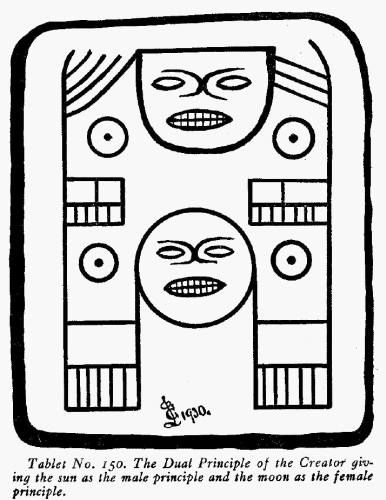
Niven's Mexican Stone Tablet, No. 150 (½ Size). Found 4½ miles N. W.
of Mexico City at a depth below the surface of 17½ feet. This tablet
is over 12,000 years old.
Deciphering and translation:
The upper face represents the Sun as
the male principle of the Creator, confirmed by His symbol on either
side, a circle with a dot in the center.
The lower face that of the Moon, the symbol of the female principle
of the Creator, also confirmed by two circles with dots in their
centers.
The four box cartouches contain writings in the ancient temple
numeral esoteric writing.
The Creator created one which became two.
The two produced three.
From these three all mankind descended. Corroborated by repetition.
Legend
The Creator made man. Then divided him into two
principles - male and female. The two produced three, and from these
three all mankind descended.
I find the same conception prevailed among the Hindus, the Incas of
Peru and the Mayas. Also the people who carved the Mexican Stone
Tablets over 12,000 years ago.
Their legend runs:
"The Moon was the
sister wife of the Sun."
Thus making both the Sun and Moon symbols
of the Creator, but as His principles. This symbolism dates far
back, back beyond the Egyptians and back beyond the writers of the
Mexican Stone Tablets.
It originates in the Sacred Inspired Writings
more than 70,000 years ago and was then used to teach early man that
the Deity was dual in Creation. (Lahun, Fig. 4.)
HORUS
Horus was the third of the Lower Egyptian Triune Godhead. He
was the son of Osiris and his sister wife. Isis.
From some of the
Egyptian writings it is made to appear that Horus was once a living
man. In others he appears as one of the symbols of the Sun - Ra. I
have found nothing about either Isis or Horus in the Naacal
writings, so presume that they were Egyptian symbols only. The head
of the lower Egyptian Church was called the Horus, just as today the
head of the Catholic Church is called the Pope.
To me it appears
that Horus being a symbol of the Sun and the Sun the symbol of the
Deity, Horus was second-handedly the religious symbol of the Deity.
Early Egypt was ruled by the Church before it became a kingdom.
Many Egyptologists have endowed Horus with a grand old age. He
commenced life at the time of Osiris 22,000 years ago and kept up
his health and strength down to the time of Menes 5000 years ago. A
grand old age of 17,000 years. This goes the Hindu mistranslation
about Rama one better. Rama lasted only 10,000 years. Methuselah was
such a youngster he was never in their class.
Whether the first Horus was a living man or only a symbol I am not
prepared to say.
There is the possibility that the first Horus was
the son of Osiris, and at the death of Osiris became the Hieratic
head of the Atlantian Church - this I cannot say.
Herodotus, "History," Lib. 11-144: "Horus was the Hieratic head of
Egypt before King Menes commenced to reign."
Manetho, the Egyptian priest-historian: "The reign of the sages in
Egypt was ten thousand years. The sages were the Hieratic heads."
In the writings of Manetho there are references to six different
Horuses as Hieratic heads. In certain ceremonies the Egyptians
substituted Horus for Ra, thus showing that Horus was the symbol of
the Sun.
In the Motherland the Hieratic head assumed the title of Ra Mu as the representative of the Deity in religious matters. So later
in Egypt the Hieratic head assumed the title of Horus.
From the commencement of Egyptian history, and apparently for
thousands of years, Egypt was governed by the Church with a Horus.
The last Horus as the Hieratic head of religion in Lower Egypt was
the Horus that immediately preceded King Menes, according to Manetho.
When Upper and Lower Egypt were united under King Menes, there were
two forms of religion involved: in Upper Egypt the Sun was the most
sacred symbol, in Lower Egypt it was the Triune with Osiris heading
it. For two thousand years there was a bitter fight between the two
priesthoods, each one trying to proselyte the other.
Even the Kings
were affected, some taking sides with the priesthood of Upper Egypt,
others with the priesthood of Lower Egypt.
These details are to be
found in most histories of Egypt.
THE EGYPTIAN PRIESTHOOD
I have previously stated that the greed and
avarice of the Egyptian priesthood led them into committing the most
horrible crimes recorded in man's history.
It reached its climax
after the priesthood of Amon had amassed unmeasurable wealth. This
wealth gave them the dominant power of the land which wealth always
does, and as is always the case when a set of individuals gain
control of the wealth of a country, it has invariably ended in the
downfall of that country. There is not a single exception to this
rule to be found in history.
Even the Egyptian kings became weak
tools in the hands of the Priests of Amon so that ultimately their
priestly aspirations were gained, for they usurped the throne
itself. On the face of things this did not alter much; for before it
was the King-High Priest, now it became the High Priest-King.
After
usurping the throne their priestly power soon came to an end, for
the army rebelled against the priesthood and the Priests of Amon
were obliged to flee from Egypt into Ethiopia.
It has been written that the Egyptian priesthood never entrusted
their religious secrets or Sacred Mysteries to anyone outside of
their own fraternity.
This is not strictly true as many of the Greek
philosophers were entrusted with the Egyptian religious secrets,
among them being:
-
Solon
-
Thales
-
Pythagoras
-
Herodotus
-
Eumolphus
-
Plato
-
Orpheus,
...and possibly others as well.
FIRST EGYPTIAN TEMPLE
The first Egyptian temple was built at Sais
16,000 years ago.
The age is well authenticated as it was built by
Thorn at the commencement of Egyptian history. This is confirmed by
a tablet dug up by Schliemann at Maycarne, Crete.
This tablet states
that:
"The first Egyptians were Atlantians headed by Thoth, the God
of History. They settled on the banks of the Nile at Sais where he
built the first temple."
The discovery of this tablet was not
reported at the time except to his grandson, Dr. Paul Schliemann,
who subsequently undertook the unearthing of the Sais temple.
The
following is his report on what he found:
"We have been excavating the ruins of the ancient temple at Sais, in
Egypt, for five months. Among many other interesting archaeological
discoveries we have found a burial chamber of the musical
celebrities of that era. Here in one of the catacombs, supposed to
be from the time of the 3rd Dynasty, we found a huge casket of stone
and with it a most unusual collection of musical instruments. It
contained also a papyrus that has not been deciphered yet but I am
of the opinion that it is a peculiar kind of Egyptian musical
writing unknown to us.
The hieroglyphic inscription on the
Sarcophagus says that the musical instruments belonged to the
orchestra of the Temple of Sais, and were used for the crowning
celebration of Pharaoh Amenemhat I. Among the instruments that we
discovered, there were some that produced such sounds as, for
instance, the roar of the wind, the waves, and songs of certain
birds, and various mysterious voices of nature.
"Our music at least has not reached that degree of development. It
is only the celebrated Finn - Jean Sibelius - who has made slight
attempts at making his latest compositions imitate the voices of
nature. But for the Egyptian composers this was a vital issue of
their work.
There is a huge wood trumpet among the discovered
instruments of Sais which produces the weird sound of an angry
roaring lion; on the other hand their flute has produced the
sweetest tones I have ever listened to. It has an enchanting timbre,
and thrills the listener with magic rapture, even if one plays but a
single tone on it I can imagine how that instrument could really
make an audience wild with enthusiasm if it were played by a
virtuoso.
"Most of the instruments of an old Egyptian orchestra were of wood
and porcelain. There is only one horn of brass like metal. The
strings of their harps proved to be made of a fiber absolutely
unknown today. It is exceedingly thin and strong and has almost the
appearance of silver wire. But then again there are strings which
our chemical experts declare to have been spun from human hair.
Thus
the strings of the highest notes of an Egyptian violin are made of
exceedingly long hair taken from the head of some beauty of that
age. An orchestra of sixty-five instruments and a chorus of eighty
singers were required to perform the majestic anthem of the Sun. The
instrument that seems to figure as the most important piece of the
orchestra produces a hollow monotonous tone of haunting effect.
The
instrument is made out of a bleached human skull, the cavity of
which has been made like an artificial throat of some supernatural
monster. It is evident that this instrument produced a register of unmemorable sounds, but it required a musician who knew the secret
of his instrument, therefore it played a unique role in the
orchestra.
An inscription on the small bone says that it contained
not only the sounds of other instruments, but that also of the human
voice. It was called the dead throat. Thus my discovery is first in
archaeological records that gives such striking information of the
music of the most remote periods. It will throw a new light on the
ancient art, and serve as the most powerful impetus to all
composers, musicians and singers of this age by suggesting a new
style and form of musical expression.
"The Egyptians carried the culture of Atlantis to their colony on
the shores of the Nile, I have found in my various excavations that
the older Egypt was, the more it was cultured. The nation simply
degenerated after Atlantis vanished."
In the body of my work I have called attention to the fact that
after the sinking of the Motherland Mu, all civilizations throughout
the world either degenerated or came to a standstill, not only
Egypt, but all others, including India.
WHO WERE THE ETHIOPIANS?
The origin of the Ethiopians has ever been
a mystery to ethnologists.
There are traditions in Southern India
that:
"In ages gone by companies of Tamils took their ships and
sailed towards the setting sun. They arrived at a great land and
settled there, prospered and became great."
If I could obtain some
of their language and writing, I could tell at once whether they
were Tamils.
Return to Contents
|













